#Michel Perron
Explore tagged Tumblr posts
Text
📺This week on Dropout: on Tuesday, a new Dirty Laundry featuring Jet Lag's Sam Denby, Ben Doyle, Adam Chase, and Challenge Accepted's Michelle Khare; on Wednesday, a new episode of Dimension 20: Misfits & Magic season 2; on Thursday, the Adventuring Party talkback and the season premiere of Very Important People, with guest Anna Garcia; on Friday, go behind-the-scenes of VIP with Last Looks with Tamar Levine, Alex Perrone, and Bruce Spalding Fuller - and a new episode of Gastronauts, with guest judges Kendahl Landreth, Sam Reich, and Elaine Carroll, alongside contestant chefs Harrison Bader, Lauren Lawless, and Kenneth Anderson.

185 notes
·
View notes
Text
Ten Montreal-area parents are suing a high school teacher and a school board after their children’s classroom art assignments were allegedly posted for sale online.
The lawsuit in Quebec Superior Court seeks $155,000 per family, plus punitive damages and an apology from Westwood Junior High School art teacher Mario Perron and the Lester B. Pearson school board.
A filing dated March 15 says Perron had assigned his students at the St-Lazare, Que., school to produce a “creepy portrait” of themselves or a classmate inspired by the style of artist Jean-Michel Basquiat. [...]
Continue Reading.
Tagging: @politicsofcanada
81 notes
·
View notes
Text

La poétesse et l'oiseau doré (partie 1) La poétesse: « Monde, tu me fais mal Quand tu me tires vers le bas. Pataugeant dans l'eau sale, Ma vie n'est rien qu'un beau dégât. Lorsque tu me déchires, Jamais plus tu ne me recolles. Monde, que puis-je dire, Moi l'ange tombé dans l'envol? Je pleure dans le noir. Je crie. Personne ne m'entend. Sur moi pèse le soir, Griffes aiguisées par le temps. Je saigne, déplumée; La boue me rentre dans la peau. Semblable à la fumée, Je veux me hisser tout là-haut. Je meurs, ailes brisées Par le poids des chaînes ferrées. J'ai l'âme divisée Entre mon refuge et l'air frais. Une fenêtre ouverte A dû se casser dans mon dos. Je gis seule et inerte. Quand donc verrai-je les oiseaux? » L'oiseau doré: « Quoi, m'as-tu appelé, Moi qui laisse des plumes d'or? Sous le ciel constellé, La pluie qui tombe s'évapore. Qu'as-tu à sangloter, Assise sur un froid perron? Là d'où tu fus ôtée, Les nuées grises te prendront. Près de nombreux nuages, Tu seras souffle suspendu. Se glisseront passages Dans l'infinité pourfendue. Par un trou de serrure, Tu boiras la couche d'ozone. La lumière et l'air pur Laveront ta souillée couronne. À travers les fissures Sera rincé ton cœur aride. Les poumons pleins d'azur, Tu vivras noyée dans le vide. De haut, la lourde Terre Aura la taille d'un moustique. Que seront tes misères? Les odeurs d'égout? Le trafic? » -Poésie: extrait de "La poétesse et l'oiseau doré", à lire dans "Genèse d'une femme" par Marine Mariposa, disponible gratuitement sur https://sites.google.com/view/papillondusublime/gen%C3%A8se-dune-femme -Image: "Il Sogno", Michel-Ange
#poesie#poetry#french literature#birds#angel in disguise#angel art#angelic#fallen angel#angel#angelcore#im cryin#darkness#dark aesthetic#dark academia#muddy#earth#azure#marine mariposa#michelangelo#michel ange
3 notes
·
View notes
Text
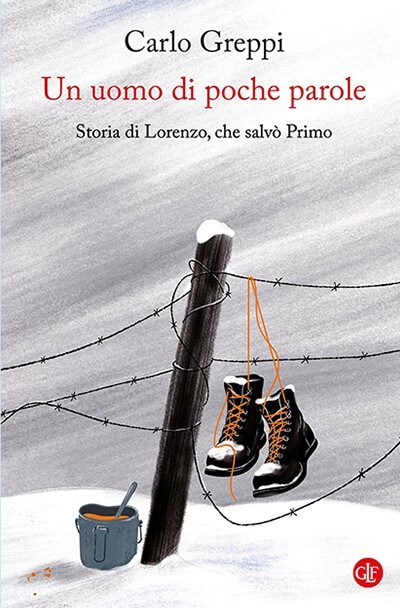
Un uomo di poche parole. Storia di Lorenzo, che salvò Primo.
Γεννημένος την Κυριακή 11 Σεπτεμβρίου 1904 στο Fossano, μια πόλη στην περιοχή του Cuneo, ο Lorenzo Perrone ήταν ο δεύτερος γιος μιας πολυμελούς οικογένειας που ζούσε στο Burgué, το παλιό χωριό των χτιστών, των σιδεράδων και των ψαράδων: οι γονείς του - ο Giuseppe και η Giovanna Tallone - ζούσαν από παλιά σίδερα και κουρέλια, παρόλο που οι επίσημες δουλειές τους ήταν "χτίστης" και "εργάτρια". Είχε τρία αδέλφια, τον Giovanni, τον Michele και τον Secondo, και δύο αδελφές, την Giovanna και την Caterina.
Δεν πήγε σχολείο πέρα από την τρίτη δημοτικού και, αν και βαπτισμένος, δεν ήταν θρησκευόμενος ούτε γνώριζε το Ευαγγέλιο - έγραφε με δυσκολία και άρχισε να εργάζεται σε ηλικία δέκα ετών. Μετά την άνοδο του φασισμού, αν και δεν ανήκε στους αντιφασίστες που δραστηριοποιούνταν στην περιοχή, ήταν σίγουρα εχθρικός απέναντί στο καθεστώς. Το 1924-25, σε ηλικία δεκαεννέα ετών, υπηρέτησε τη στρατιωτική του θητεία, ως bersagliere στο 7ο Σύνταγμα της Μπρέσια. Στη συνέχεια, όπως πολλοί άλλοι χτίστες, έγινε μεθοριακός εργάτης, μένοντας συχνά μακριά από την Ιταλία. Τη δεκαετία του 1930, αρχής γενομένης από το 1935 ή το 1936, διέσχιζε τακτικά τις Άλπεις - στην Κυανή Ακτή ή σε άλλες πόλεις της νοτιοδυτικής Γαλλίας - για να εργαστεί, διασχίζοντας μάλιστα τα σύνορα κρυφά με τον μεγαλύτερο αδελφό του Giovanni, μέσα από τα περάσματα των λαθρεμπόρων. Και οι δύο έπιναν πολύ.
Τον Ιούνιο του 1940, όταν η φασιστική Ιταλία μπήκε στον Δεύτερο Παγκόσμιο Πόλεμο, ο Lorenzo Perrone βρισκόταν λίγο πιο πέρα από τις Άλπεις: ήταν ένας από τους χιλιάδες ανθρώπους - όχι λιγότεροι από 8.500 - που φυλακίστηκαν, και μετά από λίγες ημέρες στη φυλακή απελευθερώθηκε: στις αρχές Ιουλίου βρισκόταν ήδη στο Fossano, στο γραφείο ευρέσεως εργασίας, κάνοντας αίτηση για επίδομα ανεργίας. Το να δουλέψεις στη Γαλλία είχε γίνει πλέον δύσκολο. Αλλά το 1942 υπήρξε μια ευκαιρία να φύγει, ως εθελοντής, για την Πολωνία.
Έτσι, στις 17 Απριλίου 1942, συμβεβλημένος με την εταιρεία Beotti της Piacenza στο πλαίσιο μιας ιταλογερμανικής συμφωνίας, έφτασε στα περίχωρα του Άουσβιτς, όπου θα εργαζόταν στην "Buna", που ιδρύθηκε τον Οκτώβριο του ίδιου έτους με σκοπό την παραγωγή συνθετικού καουτσούκ, συνθετικής βενζίνης, χρωστικών και άλλων υποπροϊόντων του άνθρακα. Έφτασε, για την ακρίβεια, στο στρατόπεδο Leonhard Haag, το Lager I, όπου οι Ιταλοί, σε αντίθεση με τους κρατούμενους, διατηρούσαν την ταυτότητά τους, λαμβάνοντας έγγραφα και μισθό. Είναι σχεδόν βέβαιο ότι δεν είχε ιδέα πού πήγαινε, δηλαδή στο Άουσβιτς ΙΙΙ, το οποίο στα βιομηχανικά έγγραφα εμφανιζόταν απλώς ως "Άουσβιτς", που αρχικά θεωρούνταν δορυφόρος του Άουσβιτς Ι και του Άουσβιτς ΙΙ-Μπίρκεναου της μαζικής εξόντωσης. 'Εχοντας μετονομαστεί επίσημα Άουσβιτς ΙΙΙ τον Δεκέμβριο του 1943 με διαταγή της Επιθεώρησης Στρατοπέδων Συγκέντρωσης, η επιβλητική παρουσία των εργοστασίων της Buna-Werke που κατασκευάστηκαν από την I.G. Farben τον Νοέμβριο του 1944 θα καθιστούσε το Konzentrazionslager ένα αυτοτελές στρατόπεδο συγκέντρωσης (KL Monowitz) στο μέγεθος μιας πόλης, από το οποίο θα εξαρτιόνταν τα περισσότερα από τα υπο-στρατόπεδα του συγκροτήματος, καλύπτοντας μια έκταση εκατοντάδων τετραγωνικών χιλιομέτρων, εκ των οποίων περίπου σαράντα ήταν "χώροι στρατοπέδων".
Τον Ιούνιο του 1944, ο Lorenzo Perrone συνάντησε έναν από τους "σκλάβους μεταξύ των σκλάβων": τον Primo Levi. Και δεν είχε κανένα δισταγμό. Παίρνοντας έναν τεράστιο ρίσκο, κινδυνεύοντας δηλαδή να καταλήξει με τη σειρά του στην άλλη πλευρά του φράχτη, ο Perrone προμήθευε επιπλέον λίτρα σούπας στον Primo Levi και τον φίλο του Alberto Dalla Volta κάθε μέρα επί έξι μήνες.
Ο Lorenzo Perrone στο "Suiss" (όπως αποκαλούσε το Άουσβιτς) δεν βοήθησε απλώς τους δύο νεαρούς άνδρες με τις ζωτικές και βασικές τους ανάγκες, αλλά προχώρησε παραπέρα. Τρεις φορές λειτούργησε ως μεσολαβητής, καταφέρνοντας να μεταφέρει νέα στην οικογένεια του Levi στην Ιταλία μέσω της μη εβραϊκής φίλης του Bianca Guidetti Serra - και ��αταφέρνοντας να του δώσει απάντηση και να του στείλει ένα δέμα με τρόφιμα και ρούχα. Από τους τρεις παράγοντες σωτηρίας στους οποίους ο Levi θα επιμείνει σε όλο του το έργο, δηλαδή την υπεκφυγή, την επιδεξιότητα και την τύχη, ο τελευταίος ταυτίζεται έτσι κυρίως με τον Perrone, κυριολεκτικά το "χτύπημα της δικής του τύχης".
Και έτσι σώθηκε ο Levi, ο οποίος εν τω μεταξύ είχε σταλεί στο εργαστήριο χημείας - δηλαδή στη ζεστασιά - μόλις πλησίαζε ο χειμώνας. Η τελευταία του τύχη ήταν να αρρωστήσει από οστρακιά τον Ιανουάριο, λίγες ημέρες πριν από την άφιξη του Κόκκινου Στρατού, αποφεύγοντας οριακά την πορεία θανάτου στην οποία έχασε τη ζωή του ο φίλος του Alberto. Μέχρι τότε, ο Perrone είχε ήδη πάρει το δρόμο της επιστροφής, έχοντας φέρει για τελευταία φορά τη σούπα του, παρά το γεγονός ότι είχε ρήξη τυμπάνου από έναν βομβαρδισμό. Το τελευταίο πιστοποιητικό πληρωμής έχει ημερομηνία 15 Ιανουαρίου 1945.
Όταν έφτασε στην Ιταλία, ο Perrone πέρασε από το Τορίνο για να πει στη μητέρα και την αδελφή του Levi ότι, κατά πάσα πιθανότητα, ο φίλος του Primo δεν τα είχε καταφέρει. Δεν ήθελε τίποτα, ούτε καν χρήματα για το εισιτήριο του τρένου. Είπε, αντίθετα, ότι πλέον ήταν ουσιαστικά στο σπίτι του - και ακόμη και τα τελευταία εξήντα χιλιόμετρα τα περπάτησε. Για την τύχη του φίλου του, ωστόσο, έκανε λάθος.
Μετά από μια "δαιδαλώδη διαδρομή" στην Κεντρική και Ανατολική Ευρώπη, την οποία θα διηγείτο στο βιβλίο του La tregua [Η εκεχειρία -σ.σ.], ο Levi έφτασε και αυτός στο Τορίνο στις 19 Οκτωβρίου 1945. Και τον αναζήτησε αμέσως: συναντήθηκαν για πρώτη φορά, ελεύθεροι και οι δύο, σίγουρα μέχρι τις 3 Νοεμβρίου.
Μετά τον πόλεμο οι δυο τους συναντιόντουσαν συ��νά. Σε μια από αυτές τις περιπτώσεις ο Levi ανακάλυψε ότι στο Άουσβιτς ο φίλος του από το Fossano δεν είχε φροντίσει μόνο αυτόν, όπως θα αποκάλυπτε στο Il ritorno di Lorenzo, που δημοσιεύτηκε το 1981 στη συλλογή Lilìt e altri racconti:
"Δεν βοήθησε εκεί μόνο εμένα. Είχε και άλλους προστατευόμενους, Ιταλούς και μη, αλλά του φάνηκε σωστό να μη μου το πει: κάποιος βρίσκεται στον κόσμο για να κάνει καλό, όχι για να καυχιέται γι' αυτό. Στο "Suiss" ήταν πλούσιος, τουλάχιστον σε σύγκριση με εμάς, και μπορούσε να μας βοηθήσει, αλλά τώρα που είχαν τελειώσει όλα αυτά, δεν είχε άλλες ευκαιρίες".
Το 1948, ο Primo Levi ονόμασε τη μεγαλύτερη κόρη του Lisa Lorenza, ως φόρο τιμής στον φίλο του οικο��όμο. Στο μεταξύ, πήγαιναν μαζί στην ταβέρνα, έγραφαν ο ένας στον άλλο, αλλά ενώ ο Levi άρχισε να ζει, ο Perrone δεν είχε τίποτα να κάνει. Απλώς δεν ήθελε να βρίσκεται πια στον κόσμο. Εξακολουθούσε να πίνει, και μάλιστα πολύ περισσότερο από πριν. Αρρώστησε, και ήδη το 1948 η κατάστασή του ήταν δραματική, όπως αποκαλύπτει ένα γράμμα που έγραψε στον φίλο του Primo τα Χριστούγεννα:
Αξιότιμε Signor Dottor Primo
Ανταποδίδω το γράμμα σας και χάρηκα πολύ που άκουσα ότι με θυμάστε ακόμα και μόνο εγώ δεν μπορώ να σας θυμηθώ γιατί όταν κάποιος είναι φτωχός θα είναι πάντα φτωχός αλλά φέτος ήμουν πλούσιος σε υγεία αλλά ξέρετε πως είναι η ασθένειά μου όταν κοντεύει ο χειμώνας και είναι πάντα μια μικρή βρογχίτιδα και την κρατάω μέχρι να πεθάνω. Με μεγάλη χαρά άκουσα ότι πριν από δύο μήνες η σύζυγός σας απέκτησε ένα κοριτσάκι και η μεγαλύτερη χαρά από όλα τα δώρα που μπορείτε να μου δώσετε ήταν να της δώσετε το όνομα Lisa Lorenza ώστε να φέρει και αυτή το όνομά μου αλλά ελπίζω, ευχαριστώντας τον Κύριο, ότι δεν θα χρειαστεί να υποστεί τα βάσανα που έφερα εγώ στη ζωή μου.
Τελικά προσβλήθηκε από φυματίωση και άρχισε επί ένα εξάμηνο ένα πηγαινέλα στο νοσοκομείο του γειτονικού Savigliano, μέχρι που έφτασε στο τέλος της ζωής του. Γύρω στις 7 το απόγευμα της Τετάρτης 30 Απριλίου 1952, πληγωμένος από τον πόνο της ζωής και την ανάγκη να μην το ξαναζήσει ποτέ, πέθανε ο Lorenzo Perrone, ο άνθρωπος που είχε σώσει τον Primo Levi στο Άουσβιτς.
Η σορός του έφτασε στο Borgo Vecchio, και πολλοί άνθρωποι ήρθαν, μεταξύ των οποίων, στην πρώτη σειρά, ο Levi, με τη σύζυγό του και πιθανότατα τη Lisa Lorenza. Στην κηδεία, τα πέντε αδέλφια και οι δύο αδελφές του Perrone τον παρακολουθούσαν σιωπηλά να εναποθέτει λουλούδια στο ανοιχτό φέρετρο του φίλου του Lorenzo. Ο χημικός και μάρτυρας, ο οποίος είχε ήδη δημοσιεύσει το Se questo è un uomo στην πρώτη έκδοση De Silva του 1947 και θα γινόταν διάσημος πολύ αργότερα, φορούσε ένα λευκό πουλόβερ.
Ουσιαστικά ξεχασμένος για δεκαετίες, παρά το γεγονός ότι ο Levi θα έγραφε και θα μιλούσε γι' αυτόν σε πολλές άλλες περιπτώσεις, και μέχρι τους τελευταίους μήνες της ζωής του, ο Lorenzo Perrone, ο "άνθρωπος των λίγων λέξεων" που τον έσωσε, θα γινόταν Δίκαιος των Εθνών σχεδόν μισό αιώνα αργότερα: του απονεμήθηκε η υψηλού κύρους αναγνώριση από το Yad Vashem στις 29 Ιουλίου 1998, με μια τελετή στην Alba, 35 χιλιόμετρα από το Fossano, την Τετάρτη 3 Φεβρουαρίου 1999.
Ο δεύτερος γιος του Primo Levi, που ονομάστηκε το 1957 Renzo, κι αυτός στη μνήμη του φίλου του, τον τίμησε με την ευκαιρία της απονομής ως εξής:
"Κανείς δεν άξιζε αυτή την αναγνώριση περισσότερο από αυτόν, διότι με κίνδυνο της ζωής του και με σοβαρά προσωπικά τραύματα βοήθησε τον αγαπημένο μας και πολλούς άλλους να επιβιώσουν. Ίσως θα υποδεχόταν αυτή την τελετή με το θλιμμένο χαμόγελό του, πεπεισμένος ότι αυτό που έκανε ήταν μόνο το καθήκον του: ένας μοναχικός και βαθιά καλός άνθρωπος που σημαδεύτηκε μέχρι θανάτου από εκείνη την τρομερή εμπειρία."
Μια πλάκα στη viale delle Alpi στο Fossano αφιερώθηκε στη συνέχεια στον Lorenzo Perrone, η οποία τοποθετήθηκε το 2004 με εντολή του τότε δημάρχου Beppe Manfredi, και το 2023 κυκλοφόρησε η βιογραφία του: Un uomo di poche parole. Storia di Lorenzo, che salvò Primo (Laterza), η οποία μεταφράζεται επί του παρόντος σε πολλές άλλες γλώσσες.
Τα λόγια με τα οποία ο Primo Levi τον θυμήθηκε στο Se questo è un uomo [Εάν αυτό είναι ο άνθρωπος -σ.σ.], στην πρώτη έκδοση του 1947, που γράφτηκε με τον φίλο του Lorenzo ακόμα ζωντανό, ηχούν ακόμα και σήμερα ως ένας ύμνος στην ανθρωπιά που, σε πείσμα των πάντων, κατάφερε να επιβιώσει. Και αποτελούν ένα είδος αντίδοτου στη "μόλυνση του κακού" που ο Λέβι θα διερευνήσει στο κεφάλαιο "La zona grigia" [Η γκρίζα ζώνη -σ.σ.] στο βιβλίο του I sommersi e i salvati [Αυτοί που βούλιαξαν και αυτοί που σώθηκαν -σ.σ.].
"Όσο λογικό κι αν είναι να θέλω να προσδιορίσω τους λόγους για τους οποίους ακριβώς η δική μου ζωή, ανάμεσα σε χιλιάδες άλλες αντίστοιχες, μπόρεσε να αντέξει στη δοκιμασία, πιστεύω ότι στον Lorenzo οφείλω το ότι ζω σήμερα, και όχι τόσο για την υλική του βοήθεια, όσο για το ότι μου υπενθύμιζε διαρκώς, με την παρουσία του, με τον τόσο επίπεδο και εύκολο τρόπο του να είναι καλός, ότι υπήρχε ακόμη ένας δίκαιος κόσμος έξω από τον δικό μας, κάτι και κάποιος ακόμη αγνός και ακέραιος, αμόλυντος και αδάμαστος, ξένος προς το μίσος και τον φόβο - κάτι πολύ ασαφές, μια μακρινή πιθανότητα του καλού, για την οποία ωστόσο έβαλε σκοπό να διαφυλάξει τον εαυτό του. […] Ο Lorenzo ήταν άνθρωπος - η ανθρωπιά του ήταν καθαρή και αμόλυντη, ήταν έξω από αυτόν τον κόσμο της άρνησης. Χάρη στον Lorenzo δεν ξέχασα ότι ήμουν κι εγώ άνθρωπος."
Είμαστε πραγματικά ευγνώμονες στον Carlo Greppi, ιστορικό στο επάγγελμα, ο οποίος συναντά πολλά παιδιά στα σχολεία, για αυτό το τελευταίο έργο. Ένα απαραίτητο βιβλίο. Ένα όμορφο βιβλίο. Γραμμένο με μεγάλη και ακριβή έρευνα των πηγών, όπως πρέπει να κάνει κάθε ιστορικός, αλλά και ��ε το πάθος και τη συγκίνηση της καρδιάς ενός "ψαρά μαργαριταριών". Γιατί ο Λορέντζο Περόνε είναι πραγματικά το πολύτιμο μαργαριτάρι που ο Γκρέπι πήγε να αναζητήσει στις σκοτεινές γωνιές της ιστορίας, αυτές του κακού, αυτές των τελευταίων μεταξύ των τελευταίων που κανείς δεν μιλάει γι' αυτούς, αλλά που έσωσαν και έκαναν τη διαφορά για τόσους πολλούς. Αν ένας από αυτούς που σώθηκαν λέγεται Πρίμο Λέβι, τότε μπορούμε να δώσουμε στον "Λορέντζο" της ιστορίας ένα πρόσωπο και ένα όνομα, μπορούμε να ανανεώσουμε την ελπίδα ότι ο Άνθρωπος υπάρχει ως εκ θαύματος εκεί που η μηδενιστική μανία της βίας θα ήθελε να τον εξοντώσει.
Ο Πρίμο Λέβι έγραψε για τον Λορέντζο Περόνε αμέσως, στην πρώτη έκδοση του Se questo è un uomo, που εκδόθηκε το 1947 και ήταν γνωστό σε λίγους, σχεδόν μια εκδοτική "αποτυχία", διότι το κείμενο, που αργότερα τυπώθηκε το 1958 από τον Einaudi, έγινε δεκτό επιφανειακά, ως η απλή αφήγηση ενός βετεράνου. Μόνο μετά από 10 χρόνια, με τη δεύτερη έκδοση και την αφοσίωση του Levi στην αποστολή του ως μάρτυρα, το Se questo è un uomo έγινε, μαζί με άλλα αξιομνημόνευτα κείμενά του, εκείνος ο ριζοσπαστικός προβληματισμός για τη Σοά, το κακό και τον Άνθρωπο που γνωρίζουμε.
Αλλά αυτές οι διακόσιες πενήντα "αξιομνημόνευτες γραμμές", όπως λέει ο Cavaglion [Ιταλός ιστορικός - σ.σ.], για τον Λορέντζο που γράφτηκαν από νωρίς, μετά την επιστροφή του από το Άουσβιτς, δεν άλλαξαν ποτέ ξανά. Πράγματι, στις δεκαετίες του 1970 και του 1980, ο Πρίμο φάνηκε να ανακαλεί τον φίλο του Λορέντζο πιο συχνά, τόσο στα κείμενά του όσο και στις συνεντεύξεις του.
Ποιος είναι ο χτίστης από το Φοσάνο; Ήταν ένας από τους πολλούς εργάτες από το Πιεμόντε που πήγαιναν στο εξωτερικό, στη Γαλλία, συχνά παράνομα, για μερικούς μήνες το χρόνο και οι οποίοι, μετά το 1940, με τη ναζιστική κατοχή και την είσοδο της Ιταλίας στον πόλεμο, επέστρεψαν στην πατρίδα τους, αναζήτησαν και πάλι δουλειά στην εταιρεία "Beotti" της Πιατσέντσα, που μεταφέρθηκε στην Άνω Σιλεσία από τους Γερμανούς και βρέθηκε ως "εθελοντής" οικοδόμος για την I. G. Farben, η οποία κατασκεύαζε τις εγκαταστάσεις της Buna-Werke στο μελλοντικό στρατόπεδο Άουσβιτς ΙΙΙ τον Δεκέμβριο του 1943. Η συμμαχία μεταξύ της ναζιστικής Γερμανίας και της φασιστικής Ιταλίας δεν ήταν μόνο πολιτική και πολεμική, διότι οι Ιταλοί είχαν δηλώσει, μετά από συμφωνίες μεταξύ των δύο χωρών, ότι μπορούσαν να προμηθεύουν "1100 ειδικούς" στην I.G.Farben. Οι Ιταλοί που είχαν στρατολογηθεί πριν από το 1943 δεν μπορούσαν να επαναπατριστούν και ήταν εν μέρει όμηροι και εν μέρει καταναγκαστικοί εργάτες. Ο Λορέντζο βρέθηκε έτσι ανάμεσα στους εκατοντάδες Ιταλούς του πρώτου κύματος εργατών που φτάνουν, χωρίς να το γνωρίζουν, σε εκείνο το μέρος από το οποίο μπορεί κανείς να δει, σε απόσταση μερικών χιλιομέτρων, το στρατόπεδο συγκέντρωσης και τον καπνό των κρεματόρων του. Οι εργάτες αυτοί δεν επιτρέπεται να βοηθούν τους σκλάβους του στρατοπέδου: η Γκεστάπο φοβάται ότι το μυστικό των θαλάμων αερίων μπορεί να διαρρεύσει μέσω των πολιτών. Όσοι έχουν παράνομες επαφές καταλήγουν στο Lager για μερικούς μήνες.
Τον Ιούνιο του 1944, συνάντησε για πρώτη φορά τον Πρίμο Λέβι: μετά από δύο ή τρεις ημέρες, ο Λορέντζο εμφανίστηκε με την στρατιωτική του καραβάνα γεμάτη σούπα και είπε στον άπειρο βοηθό του να την φέρει άδεια μόνο πριν από το σούρουπο. Επί έξι μήνες, ο χτίστης έφερνε φαγητό στον Πρίμο και στον φίλο του Αλμπέρτο Ντάλα Βόλτα, έδινε στον Λέβι τη φανέλα του γεμάτη μπαλώματα, του έγραφε τρεις καρτ ποστάλ για να στείλει στην οικογένειά του και, χάρη σε αυτό, ο Πρίμο έλαβε και ένα δέμα από την πατρίδα: "αυτό το δέμα, απροσδόκητο, απίθανο, αδύνατο, ήταν σαν μετεωρίτης, ένα ουράνιο αντικείμενο, γεμάτο σύμβολα: τεράστιας αξίας και τεράστιας ζωντανής δύναμης. Δεν ήμασταν πια μόνοι: είχε δημιουργηθεί μια σύνδεση με τον έξω κόσμο" (σ. 127). Στην καρδιά της Σοά, αν και προειδοποιήθηκε από τον ίδιο τον Λέβι για τον κίνδυνο που διέτρεχε, ο Λορέντζο, σηκώνοντας τους ώμους του χωρίς να μιλήσει, απάντησε: "Δεν με νοιάζει." "Ο Αλμπέρτο κι εγώ απορούσαμε με τον Λορέντζο. Στο βίαιο και άθλιο περιβάλλον του Άουσβιτς, ένας άνθρωπος που βοηθούσε άλλους ανθρώπους από αγνό αλτρουισμό ήταν ακατανόητος, ξένος, σαν ένας σωτήρας από τον ουρανό" (σ. 103).
Τον Ιανουάριο του 1945 ο Λορέντζο, μαζί με τον φίλο του Περούτς από το Φρίουλι, φεύγουν από το Άουσβιτς και θα διανύσουν περισσότερα από χίλια τετρακόσια χιλιόμετρα σε πέντε μήνες για να επιστρέψουν στην πατρίδα τους. Ο Πρίμο Λέβι, που αποκλείστηκε από την πορεία θανάτου επειδή είχε προσβληθεί από οστρακιά, σώζεται και επιστρέφει τον Οκτώβριο του 1945 μετά από μια μακρά περιπλάνηση στην Ευρώπη που περιγράφεται στο La tregua [Ανακωχή - σ.σ.]. Ο Πρίμο γνωρίζει ότι σώθηκε χάρη στη συνάντησή του με τον χτίστη του Φοσάνο: "Πιστεύω ότι στον Λορέντζο οφείλω το ότι ζω σήμερα - και όχι τόσο για την υλική του βοήθεια, όσο για το ότι μου υπενθύμιζε συνεχώς, με την παρουσία του, με τον εύκολο και απλό τρόπο του να είναι καλός, ότι υπήρχε ακόμη ένας δίκαιος κόσμος έξω από τον δικό μας, κάτι ή κάποιος που ήταν ακόμη αγνός και ακέραιος....". "Ο Λορέντζο ήταν άνθρωπος - η ανθρωπιά του ήταν καθαρή και αμόλυντη, ήταν έξω από αυτόν τον κόσμο της άρνησης. Χάρη στον Λορέντζο κατάφερα να μην ξεχάσω ότι ήμουν κι εγώ άνθρωπος" (σ. 144). Ο Πρίμο θα ονομάσει τα παιδιά του Λίζα Λορέντζα και Ρέντζο. Το Yad Vashem [Μουσείο και Μνημείο Ολοκαυτώματος στην Ιερουσαλήμ -σ.σ] θα αναγνωρίσει τον Περόνε ως Δίκαιο των Εθνών στις 7 Ιουνίου 1998.
Ο Κάρλο Γκρέπι θέλησε να γνωρίσει από κοντά τον Λορέντζο. Γιατί; Επειδή υπάρχουν πολλά περισσότερα σε αυτή την ιστορία, "μια βουβή ανάγκη για αξιοπρέπεια" που θα οδηγήσει τον Λορέντζο να αποσυρθεί σταδιακά από τη ζωή και να πεθάνει το 1952 σε ηλικία 45 ετών.
Μοναχικός, λιγομίλητος, κλείνεται μετά την επιστροφή του σε μια πεισματική και αδιαπέραστη σιωπή: δεν μιλάει ποτέ για όσα είδε. Οι καυγάδες και η αταβιστική βία του περιβάλλοντος στο οποίο γεννήθηκε έχουν εκλήψει: η βαθιά θλίψη τον έχει αλλάξει, πίνει συχνά, έχει αυτοκαταστροφικές συμπεριφορές, αλλά δεν μπορεί πλέον να κάνει κακό στους άλλους. Βέβαια, όπως λέει ο Πρίμο, "ξαφνικά ο γείτονάς σου δεν ήταν πια εχθρός στη μάχη για τη ζωή, αλλά ένα ανθρώπινο ον που είχε δικαίωμα να βοηθηθεί. Αυτό ήταν πραγματικά ένα είδος αφύπνισης για μας" (σ. 167) . Αλλά ο Λορέντζο δεν είχε χάσει ποτέ αυτή την ευαισθησία!
Και έτσι συμβαίνει να ανθίζει ο Πρίμο, να αναγεννιέται χάρη στην "απελευθερωτική χαρά της γραφής". Ο Λορέντζο, από την άλλη πλευρά, βυθίζεται όλο και πιο βαθιά. Στο Lilit, ο φίλος του θα πει γι' αυτόν ότι "δεν έπινε από βίτσιο, αλλά για να βγει από τον κόσμο. Είχε δει τον κόσμο, δεν του άρεσε, τον ένιωθε να καταρρέει - η ζωή δεν τον ενδιέφερε πια." (σ. 173) "Κάποτε με ρώτησε...: "Γιατί είμαστε σ' αυτόν τον κόσμο, αν όχι για να βοηθάμε ο ένας τον άλλον;"... Δεν ήταν Εβραίος, ούτε είχε υπάρξει φυλακισμένος. Αλλά ήταν πολύ ευαίσθητος" και ένιωθε την "ντροπή του κόσμου", την αμετάκλητη ντροπή για το κακό που έβρισκε τους άλλους (σ. 175), αυτό που "ο δίκαιος άνθρωπος αισθάνεται να τον θλίβει, καθώς η υπαιτιότητα των άλλων έχει εισχωρήσει αμετάκλητα στον κόσμο των πραγμάτων που υπάρχουν, την ίδια στιγμή που η καλή του θέληση είναι μηδενική ή φτωχή και δεν τον βοηθάει να αμυνθεί" (σ. 224).
Ο Λορέντζο ήταν "ένας απλός άνθρωπος, αλλά είχε μια υψηλή και ευγενική ιδέα για τη ζωή του ανθρώπου στη γη", είπε ο Λέβι (σ. 222). Αυτός, που ήταν χτίστης και ήταν περήφανος για τη σωστή δουλειά, δεν είχε πια καμία επιθυμία να χτίσει, ακόμη και το επάγγελμά του του ήταν απεχθές. Μια από τις σημαντικότερες βιογράφους του Πρίμο Λέβι, η Carole Angier, λέει ότι ο Λορέντζο παραιτήθηκε από τη ζωή, όχι επειδή είχε δει πολύ κακό (όπως συμβαίνει στους βετεράνους), αλλά επειδή δεν μπορούσε πλέον να κάνει το καλό ("Not just because he had seen too much evil, but because he couldn't longer do good") (σ. 185). "Εκεί πέρα - λέει ο Λέβι - δεν είχε βοηθήσει μόνο εμένα. Είχε και άλλους προστατευόμενους, Ιταλούς και μη, αλλά του φαινόταν σωστό να μην μου το λέει: "είμαστε στον κόσμο για να κάνουμε το καλό, όχι για να καυχιόμαστε γι' αυτό". Είχε, με την αλληλεγγύη του, διαλύσει "τα θεμέλια πάνω στα οποία βασιζόταν ένας κόσμος που είχε επινοηθεί πάνω στη διαιώνιση του κακού" (σ. 240).
Για τον Πρίμο είναι "σαν ένας σωτήρας από τον ουρανό... ένα είδος αγίου... δεν ήθελε να σωθεί από κανέναν, πέθανε ξεριζωμένος από τον κόσμο" (σ. 225). Παράξενοι αυτοί οι ορισμοί στο στόμα του Λέβι, ενός άθεου, για έναν φίλο που είναι επίσης άθεος. "Άγιος" επειδή εκδηλώνει μια διαφορετική πραγματικότητα από τον "ανάποδο κόσμο" στον οποίο έζησε, επειδή οι πράξεις του δεν είναι διφορούμενες αλλά διαυγείς, απλές και ξεκάθαρες, στα όρια της πιο τέλειας ανθρωπιάς. Ο Λορέντζο είναι το καλό που υπάρχει, ακόμη κι αν δεν κερδίζει.
Η Angier θα πει ότι ο συγγραφέας "έκανε την ιστορία του Lorenzo Perrone κεντρικό σημείο της έρευνάς του για τον Άνθρωπο" (σ. 166): στο ερώτημα "Ποιος είναι ο άνθρωπος", απαντά με την ιστορία του μαστόρου του Φοσάνο, επειδή "εδώ είναι ένας άνθρωπος".
Αναγνωρίζουμε στον Γκρέπι ότι προέβαλε αυτόν τον "τελευταίο" των Δικαίων, που δεν ήταν ούτε διπλωμάτης, ούτε υψιλόβαθμος, ούτε βιομήχανος. Γνωρίζει, όπως τονίζει ο διευθυντής του Μουσείου Άουσβιτς-Μπίρκεναου, Piotr M.A. Cywinski, ότι "η μνήμη μας μοιάζει λίγο με την ιστορία μας, χτισμένη πάνω σε μια αφήγηση γεμάτη από χαρακτήρες-σύμβολα και απελπιστικά κενή από εκείνους που δεν κατάφεραν να μπουν σε αυτό το φανταστικό πάνθεον" (σ. 234). Ο Λέβι ήθελε να αφηγηθεί ένα κομμάτι της ιστορίας που δεν θα παραμείνει πλέον άγνωστο και ανώνυμο: "ιστορίες ζωής όπως του Λορέντζο έχουν αλλάξει την ιστορία και τον τρόπο που διαδραματίζεται" (Cesare Bermani) (σ. 236).
Ο Λορέντζο είναι ο ακραίος εκπρόσωπος εκείνης της "αγροτικής κουλτούρας" που είναι ένας "τρόπος να βλέπεις τον κόσμο", ίσως χαρακτηριστικός των ταπεινών, αλλά προικισμένος με μια σταθερή ηθική (σ. 236), αυτή που περιγράφει ο don Lenta για την αναγνώριση του Δίκαιου των Εθνών, όταν λέει ότι "οι χτίστες και οι ψαράδες του Φοσάνο έκαναν τα αδύνατα δυνατά για να βοηθήσουν τους πιο αδύναμους της κοινότητας" (σ. 212) . Κουλτούρα αλληλεγγύης, ενσυναισθητική με αδρό τρόπο, δίπλα στον άλλον με συγκεκριμένο τρόπο. Μια κουλτούρα εκείνων που αναλώνουν παπούτσια και ενέργεια για να διασχίσουν τα σύνορα σε αναζήτηση εργασίας και ζωής.
Ο Λορέντζο είναι μια έκκληση, μια σιωπηλή κραυγή για να διακρίνουμε ίχνη καλοσύνης στην καθημερινότητα της ιστορίας, να την αφουγκραστούμε μέσα μας, εμείς και όσοι εκφράζουν μια "βουβή ανάγκη για αξιοπρέπεια", να καλωσορίσουμε και να περιφρουρήσουμε την οδυνηρή γοητεία του ανθρώπινου που κατοικεί στον κόσμο.
Daily inspiration. Discover more photos at Just for Books…?
2 notes
·
View notes
Text

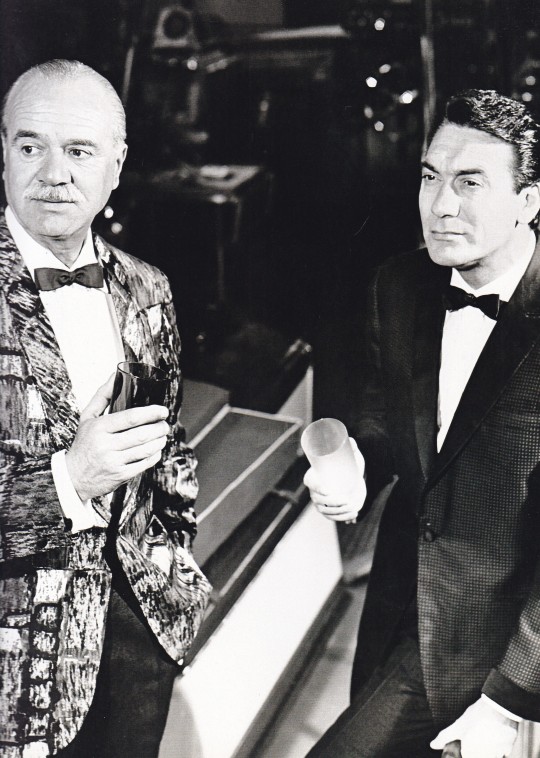
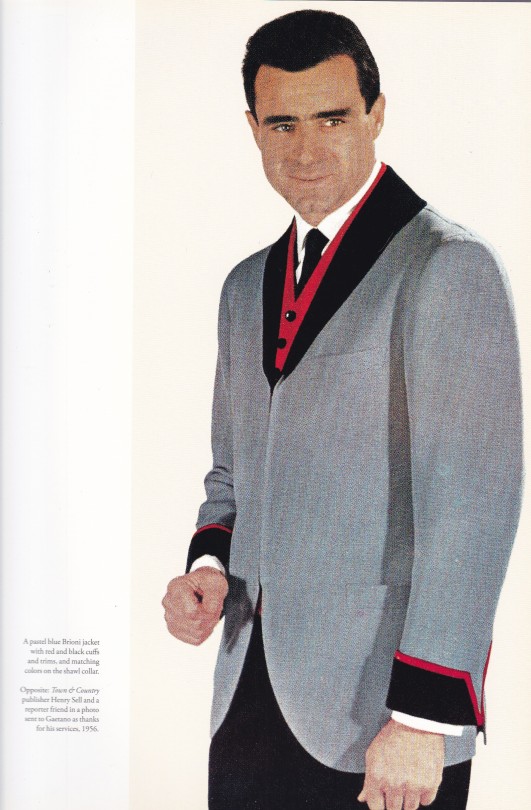
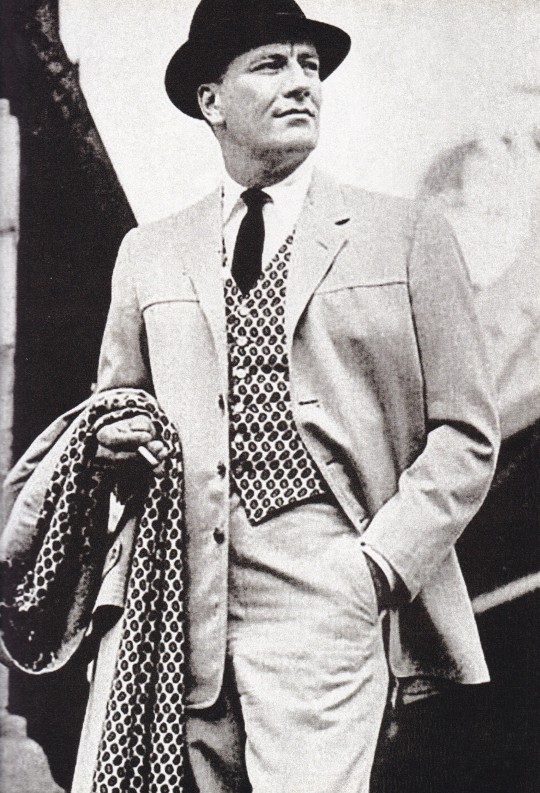
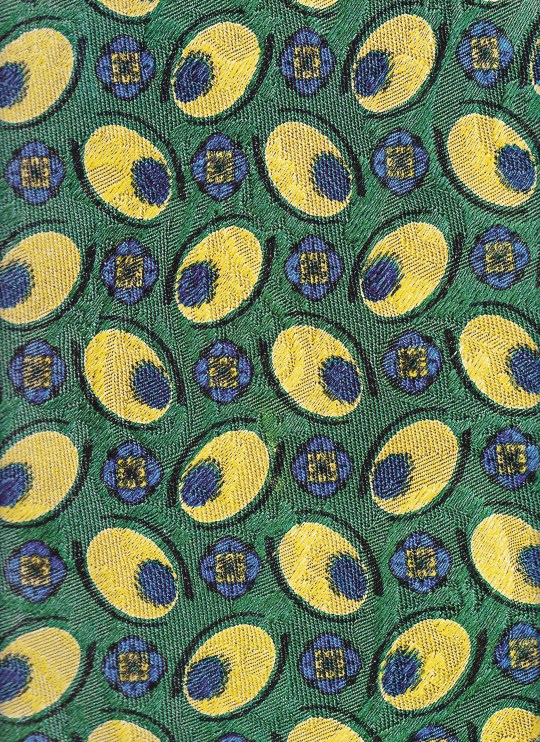



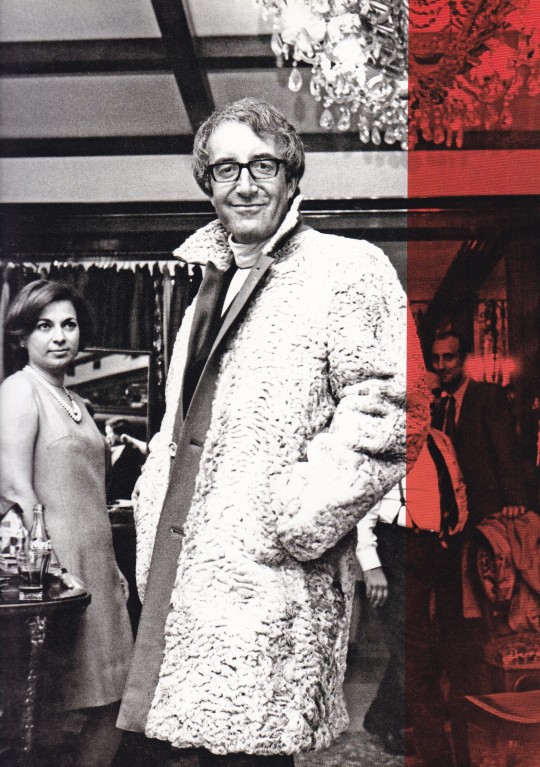

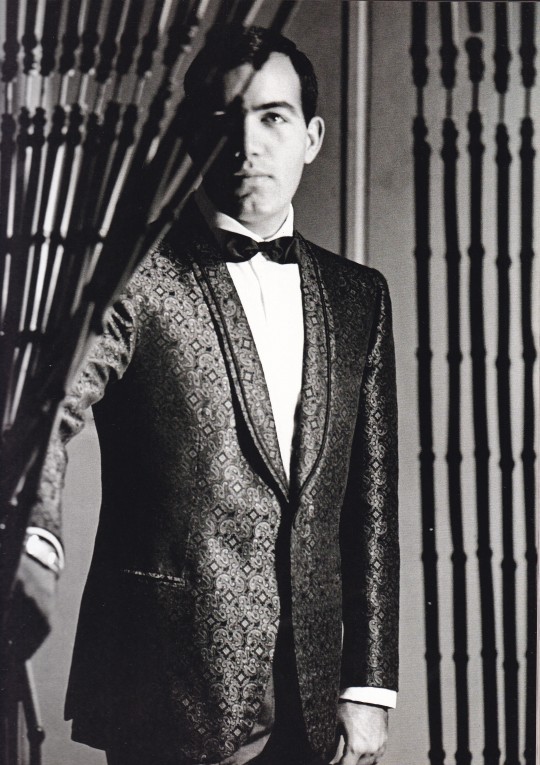

Gaetano Savini the man who was Brioni
By Fernando Morelli, Lella Della Cagna and Michelle Finamore
Preface by Gigliola Savini Perrone
Assouline, New York 2015, 202 pages, 24.13 x 30.48 cm, ISBN 978-1614284543
euro 85,00
email if you want to buy [email protected]
In the age when Savile Row was synonymous with men’s style, an innovative Italian, Gaetano Savini, put his country on the map, forever reinventing menswear. From the first men’s fashion show at Florence’s Palazzo Pitti in 1952 to his craftsmanship influences still evident in today’s styles, Savini was truly a creator on the cutting edge. His legacy as the visionary and designer extraordinaire behind the Brioni luxury brand is celebrated in this spectacular illustrated edition. Highlighting examples of Savini’s innovative cuts, bold colors, and the psychedelic patterns that led the Peacock Revolution of the 1960s, The Man Who Was Brioni includes sketches and newspaper articles illustrating how the man became the legend. Replete with letters, photographs, and personal anecdotes from Savini’s daughter and Brioni heir, this volume details the brand’s far-reaching influence, and how it came to be known as “the Dior of menswear.”
05/07/23
orders to: [email protected]
ordini a: [email protected]
twitter:@fashionbooksmi
instagram: fashionbooksmilano
designbooksmilano
tumblr: fashionbooksmilano
designbooksmilano
#Brioni#Gaetano Savini#men's style#sketches#newspaper articles#Dior of menswear#men's fashion#fashion books#fashionbooksmilano
11 notes
·
View notes
Text
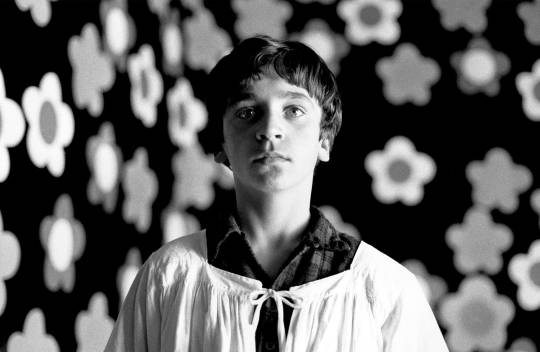
Jacques Gagnon in Mon Oncle Antoine (Claude Jutra, 1971)
Cast: Jacques Gagnon, Lyne Champagne, Jean Duceppe, Olivette Thibaud, Claude Jutra, Lionel Villleneuve, Hélène Loiselle, Georges Alexander, Benoit Marcoux. Screenplay: Clément Perron, Claude Jutra. Cinematography: Michel Brault. Film editing: Claire Boyer, Claude Jutra. Music: Jean Cousineau.
The title of Claude Jutra's richly textured film seems to promise a coming-of-age story, which is what, eventually, it delivers. But first the film acquaints us with a Quebec asbestos mining town in the 1940s. The first event we witness is a fight between a miner, Jos Poulin (Lionel Villeneuve), and his boss (Georges Alexander), which is hardly a fight at all because the boss speaks English and Jos doesn't, which easily allows him to ignore what the boss is saying and do what he wants to do: quit the mine and go look for work elsewhere. Our first look at Antoine (Jean Duceppe) is when he's doing his work as the town's undertaker: a comically macabre scene in which the corpse is denuded of the "suit" he was wearing for the viewing, which turns out to be a false front quickly plucked off the naked body and saved for another corpse, and the rosary is untwined from his stiffening fingers. Antoine is the owner, with his wife, Cecile (Olivette Thibault), of the town's general store, which employs his teenage nephew, Benoit (Jacques Gagnon); a teen girl, Carmen (Lyne Champagne), who lives at the store because her skinflint father (Benoit Marcoux), who pockets her earnings, doesn't want to pay for her upkeep; and Fernand (Jutra), who clerks at the store. It's Christmas time, though there's not much sentiment in the film's treatment of the holiday. One of the best scenes in the movie comes when the mine boss rides through the town in a little two-wheeled cart, tossing cheap gifts to the children as the grownups frown at his stinginess and comment that he hasn't given out any raises or bonuses. Benoit and a friend throw snowballs at the horse, causing the boss to beat a hasty retreat. One of the most celebrated of Canadian films, Mon Oncle Antoine benefits from Jutra's adaptation with Clément Perron of Perron's story, and from Michel Brault's cinematography, but most of all from the great credibility of its cast.
5 notes
·
View notes
Text

We are celebrating 40 eventful years of existence this year and we are pleased to announce a special Anniversary studio album entitled “Morgöth Tales”, to be released on July 21st, 2023 via Century Media Records.
Once more recorded and mixed by Francis Perron at RadicArt Studio, mastered by Maor Appelbaum and produced by VOIVOD, “Morgöth Tales” includes fresh studio (re-)recordings by the band’s current line-up of 9 especially selected, not-so-obvious picks from the band’s hyper-classy and extremely diverse back catalogue (between 1984 and 2003) as well as a brand-new song in the album’s title-track, “Morgöth Tales”.
VOIVOD drummer Michel “Away” Langevin commented about “Morgöth Tales” as follows: “’Morgöth Tales’ covers 40 years of space exploration. It was really exciting for us to revisit a more obscure part of the Voïvod catalogue, from thrash-punk to prog-metal to…? The title track is a new song, which we started writing in the tour bus and hotels during the Opeth European tour in November/December 2022. It has the vibe of the experimental music we are doing nowadays, with a new twist I think. We also had the great thrill of getting E-Force and Jasonic involved on this album. I hope you’ll dig it, Chewy, Rocky, Snake and I certainly had a blast recording it. All aboard and ready for take off!“
Tracklist:
1. Condemned To The Gallows
2. Thrashing Rage
3. Killing Technology
4. Macrosolutions To Megaproblems
5. Pre-Ignition
6. Nuage Fractal
7. Fix My Heart
8. Rise (feat. Eric Forrest)
9. Rebel Robot (feat. Jason Newsted)
10. Morgöth Tales
More details will follow
3 notes
·
View notes
Text
080- Correspondante avec bénéfices (07AVR23 6/6)!

Embarquons dans un nouveau chapitre de cette aventure qui m'a marqué au fer rouge des booooooons feelings! Vous pouvez lire les billets (si vous ne l'avez pas encore fait) 055 - 060 - 066 - 070 - 075 pour les parties de l'histoire que j'ai déjà racontée. Ce billet est justement une suite logique de l'aventure. Mais non, je ne ferais pas comme Netflix, vous n'aurez pas besoin de skipper le résumé des épisodes précédents. J'en suis arrivé au sixième chapitre, originellement prévu au scénario, mais je dois dire que ça va aller au-delà de six épisodes. On commence avec; une première fois chez elle!
Par un vendredi après-midi ensoleillé et frais, l'hiver a déjà commencé à installer un manteau blanc de neige et une mare de gadoue grise. Je ne me souviens plus si j'avais pris un petit congé, mais mon adorable compagne a sacrifié quelques heures de sommeil alors qu'elle est en chiffre de nuit. Son adresse postale me conduit dans un secteur de la ville fusionnée inconnu pour moi. Oooooh, chanceuse! Mon amie est une riveraine de grande rivière, petite plage à proximité, quartier résidentiel faiblement densifié. Un rêve pour ceux qui aime la campagne à la ville et les femmes rondes bucoliques.
« Wooooow, c'est ici »! Son adresse, sa voiture, sa galerie, ses courbes! Elle est là, qui m'attend, en manteau d'automne zippé jusqu'au cou, un sourire gourmand et.. les jambes nues dans des bottes d'hiver Acton. Elle m'avait averti que sa maison est énorme, sans qu'elle n'en soit la propriétaire, une location à long terme qui commence à lui coûter cher. Le propriétaire du lot lui fait des pressions pour qu'elle en devienne l'acquéreur, le marché de la revente est en mode haussier vertigineux.

Une étreinte cou à cou de durée indéterminée sur le perron, en me souvenant qu'elle ne voulait pas de frenche interminable, c'est réservé pour un futur chum 🥺. On entre, on fait disparaitre les vêtements d'hiver. Ce que je vois d'elle, je sais que c'est ce que j'ai toujours secrètement rêvé. Ce que je vois? C'est l'harmonie des rondeurs! Je suis certain que c'est Michel-Ange qui a créé cette femme! Ses courbes dissimulées sous une nuisette blanche format mini, je suis d'ores et déjà près de l'orgasme!
Puis, elle me prend une main pour me guider vers l'escalier qui monte à l'étage des chambres. Cet escalier, pourtant bien ordinaire, il est imprimé quelque part dans mon cerveau, là où même l'Alzheimer ne pourra étendre ses griffes. Elle monte devant moi et ce que j'y vois me fait encore capoter en 2023 (nous étions en 2015). La courte nuisette permet d'y voir les grosses fesses dodelinantes à chaque pas, les cuisses dodues se durcissant en montant l'escalier, les hanches toutes en courbes se balançant, les longs cheveux suivant la courbe du dos.. wooooow.. c'est une ange qui m'amène au paradis ou c'est la dame blanche qui m'attire dans un piège pour me condamner à me noyer dans son jus de chatte pour l'éternité.. ooooooui! Si vous saviez comment je suis bandé en écrivant ce passage!

Vite vite, elle me fait faire la visite de l'étage, jusqu'à sa chambre au grand lit blanc, à la lampe de chevet qui laisse filtrer une douce lumière (sans bas culotte sur l'abat-jour), aux rideaux de fenêtre adaptés aux travailleurs de la nuit et à ses portes miroirs étincelants de la garde-robe.. une chambre nuptiale! Mes vêtements disparaissent magiquement, une verge dressée devient le centre d'attention du regard de la belle!
Elle se met à genoux, sachant sa bouche avide de sexe, elle attaque ma queue de coups de langue qui vont droit au but; elle sait où est ce spot tellement sensible, entre le gland et la hampe. Elle surveille ma réaction, voyant certainement que mes yeux brillent de feelings. Elle libère ses gros seins déjà gonflés d'excitation.. huuuum.. je capote ma vie! Watch out, le point de non-retour est tout près.. je rejette sa bouche.. un cas de force majeure. « Je veux te boire chérie, écarte tes jambes. J'attends ce moment depuis un bout ». Oui, sa vulve format plus que pour la langue, me hante encore aujourd'hui.

Ben oui, c'est à mon tour d'amener la belle vers d'autres ressentis. Ma langue ne se tanne pas de goûter ce jus au goût âcre et salé, qu'elle me donne abondamment. Tirer et lécher, souffler et aspirer, pousser ma langue dans son vagin à l'image de sa grosse vulve, incroyable! Téter ce clitoris, le rouler sous la langue, résister aux spasmes des jambes qui suivent les cris de ma maîtresse! Oh.. le jus du minou devient abondant et coulant comme les érables à la Pâques, salé et acidulé.. je comprends ici que c'est une femme fontaine, hihihi! Je n'y résiste plus, j'enfonce un, deux puits trois doigts.. my god.. je pense que mon bras peut y entrer! C'est assez.. elle me tire vers elle et place mon pénis en contact avec la chaleur de sa vulve.
Si vous n'êtes pas un homme, vous ne pouvez savoir comment ça rend fou que de placer un gland de queue sur une vulve. Oooooh.. je n'ai pas mis de condom.. un combat intérieur m'anime.. je pénètre ou non? On se regarde quelques secondes, un petit mouvement de bassin de sa part pousse mon gland dans l'entrée du paradis. J'y pousse ma verge à l'intérieur, un centimètre à l'heure, profitant de tout ce plaisir qui rend dingue. I-n-c-r-o-y-a-b-l-e-! C'est comme si c'était la première fois de ma vie que je pénétrais une femme. Vraiment, chaque entrée et sortie est un Big Bang de feelings.

Toutes les positions du kamasutra adaptée aux femmes bien en chair y passent, incluant ce cowgirl où le passionné de gros lolos en moi en a eu pour son argent! Les auréoles gonflées de plaisirs avaient quelque chose d'hypnotisant. Les cuisses de mon hôtesse enhardie par cette cavalcade étaient sublimes. J'ai tout fait pour résister à la tentation de soulever la nuisette et d'y plonger mes yeux d'envie.
Elle prenait plaisir de sucer ma queue quelques secondes entre chaque changement de position.. la chanceuse.. goûter une queue couverte d'endorphines de jus de chatte. Je pousse mon hôtesse sur le dos, avec quelques va-et-vient de la main. Mon sexe n'en peu plus, ce point de non-retour est traversé, mon cerveau commande une éjaculation. Ooooooh, je laisse aller une longue giclée de foutre sur les seins, ce qui me vide pratiquement de toute mon énergie vitale. Wooooow!
Après un long moment à se chuchoter des mots doux, mon amie me conduit à la douche. Je sais d'avance que je vais m'y rincer en mode solo, mais quand même, ma compagne m'achale au travers le rideau, ayant gardé ses seins en mode libârté! Alors que je retourne à la chambre, je découvre un félin bien dodu qui s'est étendu sur mes vêtements! En tant qu'amoureux des chats et des chattes (hihihi!), le spectacle est adorable.. c'est le coup de foudre ronronner entre nous deux, le minou et le matou!
Mon ange m'attend en bas, un verre d'eau bien froide pour que je puisse d'étendre mes jambes vidées de tonus. On placote, on se minouche, on se désire jusqu'à ce que la vie nous prépare un nouveau rendez-vous, ici! Comme on dit, to be continued! Merci encore de votre passage sur mon blogue!
#ronde #admirateur #bbw #ssbbw #toutoune #grosse #enveloppée #bienenchair #rencontre #curvy #chubby #jardinsecret #monteregie #correspondre #correspondante #dating #feelings #over50 #50plus #excitation #amant #maitresse #maison #escalier #poitrine #kamasutra #lecher #passion #desirs #chambre #fellation #douche #orgasme #chatte #nuisette #seins
2 notes
·
View notes
Text

CINE El caso Villa Caprice (2020) Título original: Villa Caprice Francia Dirección: Bernard Stora 1)Idioma: Doblada al Español 2)Idioma:Francés
Atención: Solo para ver en PC Notebook Tablet Para ver el Film pulsa o copia y pega el Link: https://memoriasdelcafe.blogspot.com/2025/01/el-caso-villa-caprice-2020.html
Reparto: Niels Arestrup, Patrick Bruel, Irène Jacob, Claude Perron, Michel Bouquet, Paul Hamy, Alaa Safi, Laurent Stocker
Género: Drama judicial / Abogados/as Basado en hechos reales
Sinopsis: La vida de Luc Germon, un famoso abogado de gran reputación, se ve trastocada cuando acepta a un nuevo cliente, Gilles Fontaine, uno de los empresarios más poderosos de Francia. A este le acusan de comprar una propiedad en circunstancias sospechosas, y deberá confiar en las habilidades de Germon para librarle del caso, pero poco a poco, los aliados empezarán a convertirse en enemigos.
Críticas: "Un encomiable estudio sobre el poder y su fachada, sobre la soberbia y sus desvalimientos. (…) su radiografía de la supremacía de la vileza es fascinante." -Javier Ocaña: Diario El País
Café Mientras Tanto jcp
0 notes
Text
Michele Lavopa è stato bloccato dai Carabinieri poichè ritenuto l'esecutore dell'omicidio di Antonella Lopez

C'è un fermo per l'omicidio di Antonella Lopez, la ragazza di 19 anni uccisa ieri in discoteca a Molfetta mentre era in corso un agguato. Un giovane di 21 anni, Michele Lavopa, originario di Bari, già noto alle Forze dell'Ordine, è stato bloccato dai Carabinieri poichè ritenuto l'esecutore dell'omicidio. Le indagini, a cura dell'Arma, sono coordinate dalla Direzione Distrettuale Antimafia. Secondo una ricostruzione, nel gruppo assieme a Lopez vi era Eugenio Palermiti, 20enne nipote dell'omonimo boss barese rimasto ferito assieme ad altre tre persone. di 20, 25 e 22 anni presenti nel locale. I giovani sono stati tutti medicati e ricoverati in ospedale a Bari. Il 21enne presunto killer, avrebbe agito al culmine di un litigio scoppiato per futili motivi: almeno 6 i colpi d'arma da fuoco che sarebbero stati esplosi in direzione del gruppo di ragazzi che si trovavano in quel momento nel locale molfettese. Uno dei proiettili avrebbe colpito alle spalle Antonella Lopez, recidendole l'aorta e provocando il decesso in pochi minuti. Lavopa è accusato di omicidio e tentato omicidio nei confronti dei 4 feriti, oltre che di detenzione illegale di arma da fuoco in un luogo pubblico. Il giovane, secondo quanto riporta l'Adn Kronos, avrebbe ammesso le sue responsabilità nel corso di un interrogatorio come persona indagata, nella serata di domenica davanti al pubblico ministero Federico Perrone Capano e alla presenza del difensore di fiducia, l'avvocato Nicola Martino. Il 21enne avrebbe riferito di essersi disfatto dell'arma utilizzata, una pistola calibro 7,65, gettandola in mare non appena fuori della discoteca. Lavopa avrebbe spiegato agli inquirenti di essersi recato nel locale assieme alla propria fidanzata e ad un gruppo di amici, nella tarda serata di sabato per trascorrere la nottata senza alcuna intenzione aggressiva e di aver portato al seguito una pistola calibro 7,65 per difendersi da eventuali aggressioni, come spesso avvenuto nei locali notturni baresi. Il fermo di indiziato di delitto da parte della polizia giudiziaria, ed eseguito dai carabinieri del Reparto Operativo del Comando provinciale di Bari, nei confronti di Michele Lavopa sarebbe dovuto sia alle rivelazioni autoaccusatorie del 21enne, sia al pericolo di fuga o di reiterazione del reato. Read the full article
0 notes
Text
Ypsilanti, Michigan, 1945. Engineer Preston Tucker dreams of designing the car of future, but his innovative envision will be repeatedly sabotaged by his own unrealistic expectations and the Detroit automobile industry tycoons. Credits: TheMovieDb. Film Cast: Preston Tucker: Jeff Bridges Vera: Joan Allen Abe: Martin Landau Eddie: Frederic Forrest Jimmy: Mako Howard Hughes: Dean Stockwell Junior: Christian Slater Marilyn Lee: Nina Siemaszko Frank: Marshall Bell Kerner: Peter Donat Alex: Elias Koteas Kirby: Jay O. Sanders Noble: Corin Nemec Stan: Don Novello Johnny: Anders Johnson Bennington: Dean Goodman Ferguson’s Agent: John X. Heart Millie: Patti Austin Stan’s Assistant: Sandy Bull Judge: Joe Miksak Floyd Cerf: Scott Beach Oscar Beasley: Roland Scrivner Narrator (voice): Bob Safford Doc: Larry Menkin Fritz: Ron Close Dutch: Joe Flood Gas Station Owner: Leonard Gardner Garage Owner: Bill Bonham Ferguson’s Secretary #1: Abigail van Alyn Ferguson’s Secretary #2: Taylor Gilbert Woman on Steps: David Booth Newscaster (voice): Al Hart Security Guard: Cab Covay Man in Audience: James Cranna Board Member: Bill Reddick Mayor: Ed Loerke Head Engineer: Jay Jacobus Bennington’s Secretary: Anne Lawder Singing Girl #1: Jeanette Lana Sartain Singing Girl #2: Mary Buffett Singing Girl #3: Annie Stocking Recording Engineer: Michael McShane Tucker’s Secretary #1: Hope Alexander-Willis Tucker’s Secretary #2: Taylor Young Police Sergeant: Jim Giovanni Reporter at Trial: Joe Lerer Ingram: Morgan Upton SEC Agent: Ken Grantham Blue: Mark Anger Jury Foreman: Al Nalbandian Senator Homer Ferguson (uncredited): Lloyd Bridges Girl at Mellon Publicity Event (uncredited): Sofia Coppola Film Crew: Executive Producer: George Lucas Director: Francis Ford Coppola Producer: Fred Roos Additional Music: Carmine Coppola Director of Photography: Vittorio Storaro Production Design: Dean Tavoularis Editor: Priscilla Nedd-Friendly Casting: Janet Hirshenson Sound Re-Recording Mixer: Richard Beggs Producer: Fred Fuchs Casting: Jane Jenkins Music Editor: Mark Adler Supervising Sound Editor: Gloria S. Borders Sound Re-Recording Mixer: Tom Johnson Set Decoration: Armin Ganz Costume Designer: Milena Canonero Unit Production Manager: Ian Bryce Foley Artist: Dennie Thorpe Sound Effects Editor: Tim Holland Leadman: Doug von Koss Second Unit Director: Buddy Joe Hooker Assistant Costume Designer: Judianna Makovsky Assistant Makeup Artist: Karen Bradley Set Designer: Jim Pohl Camera Operator: Jamie Anderson Foley Editor: Sandina Bailo-Lape Stunts: Jimmy Nickerson Screenplay: Arnold Schulman Sound Re-Recording Mixer: Randy Thom ADR Editor: Louise Rubacky Original Music Composer: Joe Jackson Researcher: Anahid Nazarian Assistant Sound Designer: Mildred Iatrou Location Casting: Aleta Chappelle Stunts: Gary McLarty Screenplay: David Seidler First Assistant Director: H. Gordon Boos Stunts: Dick Ziker Makeup Artist: Richard Dean ADR Editor: Tom Bellfort Art Direction: Alex Tavoularis Assistant Hairstylist: Terry Baliel Technical Advisor: Enrico Umetelli Property Master: Douglas E. Madison Script Supervisor: Wilma Garscadden-Gahret Still Photographer: Ralph Nelson Jr. Stunts: Steve M. Davison Sound Effects Editor: Robert Shoup Stunts: Tim A. Davison Assistant Sound Editor: Martha Pike Hairstylist: Lyndell Quiyou Costume Supervisor: Winnie D. Brown Assistant Sound Editor: Michele Perrone Foley Editor: Diana Pellegrini First Assistant Camera: Billy Clevenger Assistant Property Master: Douglas T. Madison Construction Coordinator: John J. Rutchland Jr. Unit Publicist: Susan Landau Finch Second Assistant Director: L. Dean Jones Jr. Production Sound Mixer: Michael Evje Assistant Sound Editor: Clare C. Freeman Assistant Sound Editor: Paige Sartorius Location Manager: Rory Enke Second Assistant Director: Daniel R. Suhart Gaffer: Pat Fitzsimmons Dialogue Editor: Melissa Dietz Associate Producer: Teri Fettis-D’Ovidio Boom Operator: D. G. Fisher Special Effects Supervisor: David Pier Production Accountant: Joe Murphy Negative Cutter: Donah Bassett Second Assistant C...
#1940s#automobile industry#based on true story#biography#car designer#Chicago#illinois#industrial espionage#Top Rated Movies
0 notes
Text
“I Salmoni aspettano agosto” di Elena Panzera, Giulio Perrone Editore. A cura di Patrizia Baglioni
Cosa fanno i salmoni ad agosto? Risalgono il fiume. È questo che apprende Michele da un documentario che la madre guarda in tv, e ciò che il giovane non si spiega è perché facciano tutta quella fatica. Con coraggio sfidano gli orsi, le intemperie, i pescatori e soprattutto vanno controcorrente. I salmoni, se si osserva bene la loro storia non sono così banali. Risalgono il fiume per…

View On WordPress
0 notes
Text
Medieval Nicknames, Pet Names & Diminutives — Male
Adam: Adnet, Adenot, Adkin, Ade, Add
Aloysius: Lowis, Lewis, Lewin, Louis
Amyas: Amyot, Amand, Amadis (Fr)
Ancel: Ansel(l), Anselm, Ancelot, Anscelin, Hanselin, Anselin
Andrew: Dandy, Tandy, Dancock
Anketil: Antel, Anker, Antin, Aske Asketil, Askil, Annakin(Yo), Asti
Arnold: Arnaud, Arnot, Arnel
Auberon/Aubrey: Oberon, Avery, Avo, Aves, Auvery, Aubert, Albray, Albert
Bartholomew: Bart, Ba(t)te, Barty (Scots), Batty, Batkin, Bette, Bartelot, Bertelot, Bertelmew
Christopher: Stoffer, Kit(te), Kester, Kitelin, Christal (Scots)
Denis: Dionysus, Den(et), Denzil, Denisel
Egidius: Aegidius, Giles,Gille, Gillard, Gilo, Gisel
Elias: Ellis, Elcock, Helle, Eliot, Elwaud (Scots), Elwat, Eluat, Eluolt, Elkin, Helyas, Hellis, Elyet, Allat, Alard Adalard, Elicoc, Hellcock, Elie
Geoffrey: Jeppe, Geff, Gepp, Jeeves, Jeff, Jefcock, Jeffkin, Jeffrey
Gerald/Gerard: Girard, Garard, Garrald, Garrood, Jarrold, Jarrot, Jerald, Greoud, Jared
Gilbert: Gibb, Gibelin, Gibelot, Gip
Hamo: Hamlet, Hamlin, Hammet, Hamnet, Hamon(d), Haim(o), Hame, Hamon, Aymes, Hamekin, Hawkin
Henry: Hal, Harry, Herry, Hanne, Hen(kin), Hanekin, Halkin, Hawkin
Hilary: Ilarius, Illore, Eularius, Eylarius, Ellery, Hille
Hugh: Hugo, Huiet, Hughelot, Ugo ,Hugelin, Huelin, Hulin, Hudde, Huglin, Hudkin, Hukin, Howe, Hewe, Huget, Hudelin, Huhel, Huwet, Huchon (Fr)
James: Jago, Jacob(i), Jacce, Jack(lin), Jagge, Jakot, Jackett, Jackamin, Jex, Jem(me), Gimelot, Jimme, Jaycock, Jakock, Jankin, Jaques, Cob(et), Jakemin
Joel: Juhel, Jool, Jol, Johol, Joelin, Joylin, jollein
John: Jack, Jankin, Jenkin, Jan(cock), Hank (Flem), Henk(e), Henkin, Hann, Jonet, Jehan, Janin, Janne, Jenin, Hancock
Joscelin/Goscelin: Josse, Joyce, Josset, Gotselin, Gotsone, Jukel, Judoc, Joy, Joshin, Joce, Goss, Got(te), Goslin
Lawrence/Laurence: Larry, Lorenz, Larkin, Lorkin, Laret, Lawrie, Lowrie, Low, Laur
Leonard: Leo, Lyel, Leon, Leunot, Leonides, Lionel, Leoline
Luke: Lucius, Lucian,Ludovic, Luck Lucas, Luket
Matthew: Mayhew, Makin, Masse, Math(e), Mathy, Matkin, Maton
Michael: Mihel, Michel, Miot, Mighell, Miche, Miell, Miles, Milo
Nicholas/Colin: Colcock, Cole, Coll, Colkin, Colet, Nicol, Nicolin, Nicks, Nix
Odo: Odelin, Eudo, Otho, Odinel, Othello
Orlando/Roland: Rollet, Rollin, Rowland, Rowlatt, Rollant, Ruel, Rollanz, Rauland
Paul: Poul, Pole, Pauley, Paulin, Powlis
Peter: Pierce, Piers, Pers, Pell, Perkin, Pirret, Perrin, Perr(el), Pierun, Perron, Peterkin, Petri (Scots)
Philip: Phelp, Philp, Felip, Filkin, Philpot, Phipp, Potkin, Potin
Ralph: Rafe, Rafael, Raff, Radulf, Raul, Raulin, Raulot
Randolph: Randall, Randle, Randulf, Rand(y), Hann, Rann, Ranulf, Rankin, Randekin, Ranel, Rendall
Reginald: Reynold, Reynaud, Reginaud
Richard: Rick, Rich(ie), Digge, Ricot, Richelot, Rickard, Dicel, Dic(con), Dicet, Dicelin, Diggen, Hick, Hicun, Hickot
Robert: Rob(in), Robelard, Dobb(in), Hobb(in), Hobelot, Hobelin, Hopkin, Nobb, Nabb, Nabelot, Bobbet
Roger: Hogg, Rodge, Hodge, Dodge, Dogge, Doggin, Hodgekin
Silas/Silvester: Silvanus, Selwyn, Selvayn, Savin, Salvin, Selwin
Simon: Sim(o)nel, Sim(kin), Simond, Simonet, Simcock
Theobald: Tibalt, Tibbald, Tebbet, Tebb(el), Tybaud, Tepp, Talbot
Theodore: Theodoric, Terry, Todrick, Torrey, Tyrri, Tedric, Therry, Thierry (Fr), Deryk (flem)
Thomas: Tom(lin), Tomkin, Tomcock, Tam(lin), Tommis
Torald: Tory
Vivian: Vidian, Fithian, Fidd, Fidkin, Fiddian, Vidgen
William: Wilmot, Guylote, Will(y), Willet, Wilot, Wilcock, Gilot, Gilmyn
(further reading: female names)
#writeblr#medieval research#medieval#novel writing#fiction writing#character names#character development#medieval nicknames#sarah waldock#renaissance regency rummage repository#diminutive#mens names#names dont really have a gender but you get the idea#names
112 notes
·
View notes
Photo










Amélie (2001) Director - Jean-Pierre Jeunet, Cinematography - Bruno Delbonnel "Life's funny. To a kid, time always drags. Suddenly you're fifty. All that's left of your childhood... fits in a rusty little box."
#scenesandscreens#amélie#audrey tautou#Mathieu Kassovitz#Rufus#Serge Merlin#Lorella Cravotta#Clotilde Mollet#Claire Maurier#Isabelle Nanty#Dominique Pinon#Artus de Penguern#Yolande Moreau#Urbain Cancelier#Jamel Debbouze#Maurice Bénichou#Michel robin#Andrée Damant#Claude Perron#Ticky Holgado
123 notes
·
View notes
Note
Hi, it’s me, Fanfic Anon #2. I really can’t believe that Michel played their song in front of them. I swear sometimes life itself is like fanfic! I was a little disappointed they didn’t show them during that song, but I hope you all enjoy my take on what could have happened.
He gasped when he heard those first twinkling notes on the piano, in disbelief as he watched the man start to play. He would know that song anywhere, the song ingrained in him at the cellular level, as if he was the one who first wrote it because it so perfectly fit him, his life, his feelings for the woman sitting right beside him, the only woman who mattered in this hall of thousands, the only woman who ever matters.
As subtly as he could, not wanting to draw the attention of the cameras, or the crowd with their cell phone cameras around them, he leaned over to whisper in his wife’s ear, "did you ask him to play this?"
She shook her head no as she reached over to grab his hand, and link his fingers with hers, equally moved and affected as she watched their song come to life on this grand stage.
He squeezed his wife’s hand gently, wishing they were actually alone right now so he could fully take her in his arms and hold her to him so tightly that there was no space for light between them, needing to feel her heart beat against his as it beat only for her, but he was settling for as much contact as he could get, smiling when he felt her squeeze back.
They continued to sit there, transfixed and in their own little blissful bubble, completely oblivious to the knowing look their daughters exchanged beside them, oblivious to the way Didier and his wife had noticed something was up and were staring. For them, in this moment, time stood still, and the rest of the world melted away. This moment was magical and it was theirs.
As the song came to an end, she leaned over to whisper right into his ear so that he, and only he, could hear, "I love you, mon cœur, I love you so much," needing to get how she was feeling off her chest, the emotion of the moment too powerful to remain buried.
He smiled at her, that special smile reserved only for her, the one she had pulled from him earlier that day on the perron of the Élysée by the smile she reserves only for him, before deciding to screw the fear of drawing the attention of everyone around them, and pressing a kiss to her lips in response, showing her how much he loves her, a fool that is happily, freely, eternally hers.
Hellooo fanfic Anon #2! ❤️
This piece was adorable and exactly what we needed to go along with the “love me please love me” being played in front on them 🥰
Thank you so much, fanfic Anon #2! ❤️❤️❤️
5 notes
·
View notes